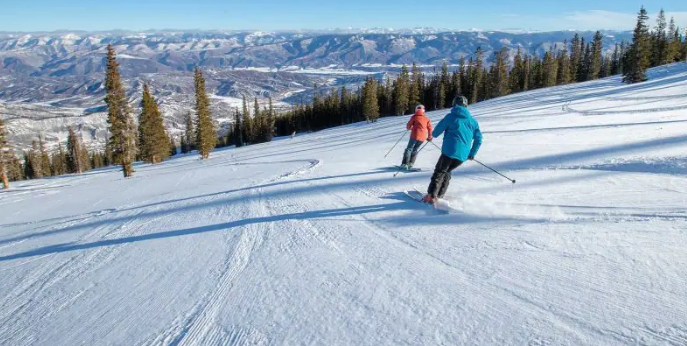The Original Ski Lawyers
LINDA:
In 1980, Jim Chalat published a law review article about the Colorado Skier Safety Act. It had been enacted in 1979 in order to protect ski area operators from liability in cases involving the “inherent risks of skiing. Since then, we have developed a practice area concerning skier accidents. In 1998, I created and now manage the website: SKILAW.COM. The site is devoted exclusively to the skier accident practice at our firm. We advocate at the legislature for skier safety and Jim, Evan and Russell speak, teach and publish in the field of recreational accidents and the law.
JIM:
The ski industry in Colorado has changed. It is now a major corporate enterprise. Approximately 80% of the 13 million annual skier days in Colorado are controlled by four major corporations, each with billions in assets, and millions of customers. Vail Resorts Inc (Ticker: MTN) controls 5 ski areas in Colorado on about 35,000 acres of federal land under Special Use Permits. Aspen Ski Co. operates on 7,800 acres of USFS land in the White River Forest. Aspen is a partner in Alterra Mountain Co., which in turn operates Steamboat and Winter Park. Powdr Corp. operates Eldora and Copper Mtn. All 4 of these resorts occupy public land. For the skiers and snowboarders, things have changed as well. Some things are better. In most cases lifts are safer and faster. Ski and snowboard equipment and clothing have improved. Safety has improved—largely because of the almost universal use of helmets. But still, this ski season, we can reliably predict that about 17,000 skiers or snowboarders will sustain injuries on the slopes. Of those, probably a dozen people will be catastrophically injured – spinal cord (SCI) traumatic brain (TBI), or severe orthopedic injuries. Snowboarders and skiers suffer different types of injuries, but their statistical likelihood of an injury is equivalent. Despite common misconceptions, snowboarders are neither more dangerous nor more likely to be injured than skiers.
EVAN:
How you can best protect yourself and your family? About 5% of all skiing injuries are due to collisions. The uphill or overtaking skier (or rider) has the primary duty to avoid the skier who is downhill. When entering or crossing a trail, a skier must yield to skiers already on the trail. Skiers must maintain a lookout and ski in control and within their ability. Wear good goggles so that you can see where you are going. Maintain your equipment so you can stop and turn. Don’t ski alone. Adjust your bindings to the correct DIN. And, what should be obvious, do NOT drink alcohol or smoke pot and ski or ride. Following these rules would prevent most accidents. The Colorado Ski Safety Act requires all parties to a collision to stay at the scene and give their name and current address to ski patrol. We recommend that you never ski or ride alone. It’s important to carry your cell phone and a trail map so you can call for help and provide your location on the mountain. If there is an accident, stay calm. Keep the injured person warm and don’t move them. Stop the bleeding, keep them breathing, knowing a little 1st aid is a good idea for any outdoor activity. At a large ski area on a busy holiday weekend, it can take time to get help. The Ski Act also provides that an injured skier can sue for damages if he or she is hurt by an out-of-control skier. Skiing is not a contact sport.
RUSSELL:
Our case of James v. J.P. is a cautionary example. It was President’s Day weekend 2017. Clear skies. Good snow. Big crowds at Breckenridge. Our client, James, was a long-time skier, in in excellent condition—sixty-three years old, six-feet tall, 175 lbs. He rode the Colorado Super Chair to the Columbine trail. A 39-year old snowboarder named “J.P.” was close by in the lift-line for the Rocky Mountain Super Chair. J.P. self identified himself as an expert snowboarder. He had started his morning with a mimosa. The skiing companion of James caught it all on his GO-PRO. As James was making his way on an intermediate trail J.P.overtakes James and crashes into him from uphill. James fell hard on his left side, severely fracturing his left hip and shoulder.. Ski patrol evacuated Jim off the mountain and he was transported to the hospital for emergency hip surgery (with hardware). Two days later, his shoulder was surgically repaired. His medical expenses were nearly a quarter million dollars and he lost over a hundred thousand dollars of income as he recovered. His doctors told him his hip and shoulder would never work the same again. He hired CHALAT HATTEN & BANKER to get compensation for his injuries. After discovery and before trial, we accepted a policy limits $1,500,000 settlement. It was paid by J.P.’s homeowner’s insurance which typically covers cases like these.









